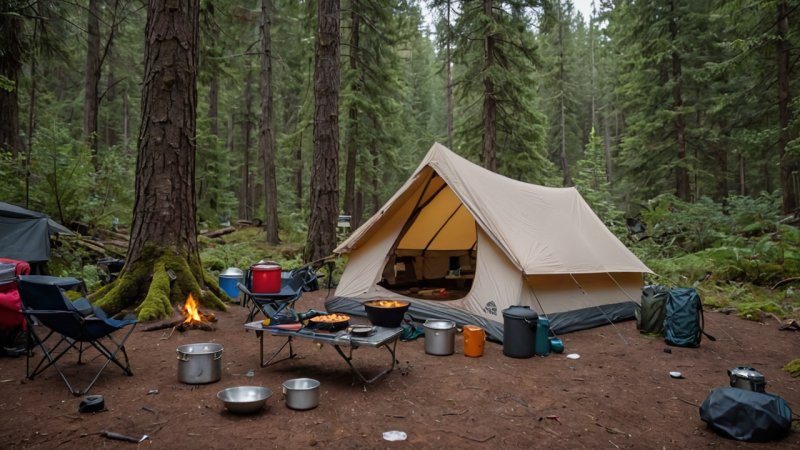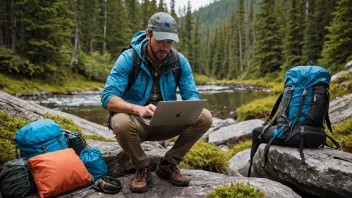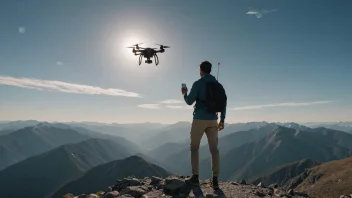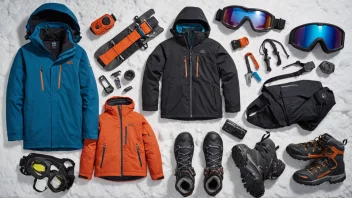Setting up a base camp for extended outdoor trips is an essential skill for anyone looking to immerse themselves in nature while enjoying the comforts of a well-organized space. Whether you’re planning a weekend hiking excursion, a week-long backpacking trip, or an adventurous expedition to remote areas, knowing how to establish a functional base camp can enhance your experience significantly. A well-thought-out base camp not only provides a safe haven from the elements but also allows for efficient organization of gear, food, and activities, making your outdoor adventure much more enjoyable.
Choosing the Right Location
The first step in establishing a base camp is selecting the right location. Here are some factors to consider when scouting for the perfect spot:
- Proximity to Water: Choose a location that is near a water source, such as a river or lake, to ensure easy access to drinking water and for cooking.
- Terrain: Look for a flat, level area to set up your tent. Avoid rocky or uneven ground to ensure a good night's sleep.
- Wind Direction: Set up your camp with your entrance facing away from prevailing winds to minimize exposure to harsh weather.
- Sunlight: Consider the position of the sun. A site that receives morning sunlight can help warm your tent, while afternoon shade can keep it cool.
- Wildlife Considerations: Avoid setting up camp near animal trails or feeding areas to reduce encounters with wildlife.
Setting Up Your Tent
Once you have selected an ideal location, it's time to set up your tent. A proper tent setup is crucial for maintaining comfort and protection from the elements. Here’s how to do it:
- Unpack and Lay Out: Start by unpacking your tent and laying it out on the ground where you want to set it up. Ensure the ground is clear of sharp objects that could damage the tent floor.
- Assemble the Poles: Follow the manufacturer's instructions to assemble the tent poles. Most modern tents use color-coded poles for easy assembly.
- Attach the Poles: Insert the poles into the designated sleeves or clips on the tent body. Ensure that the tent is taut and free of sagging.
- Secure the Tent: Use guylines and stakes to secure the tent to the ground. Proper staking will help keep your tent stable in windy conditions.
- Check for Proper Ventilation: Open windows or vents to ensure airflow. This will help prevent condensation buildup inside the tent.
Organizing Your Gear
Efficient gear organization is key to a successful base camp. Keeping your equipment neatly organized can save time and frustration during your trip. Here are some tips for organizing your gear:
- Designated Areas: Create specific areas for different types of gear (cooking, sleeping, personal items) to make it easier to find what you need.
- Use Dry Bags: Store clothing and electronics in dry bags to keep them protected from moisture.
- Pack Smart: Use packing cubes or compression sacks to maximize space and keep similar items together.
- Label Your Gear: If you're camping with others, consider labeling your gear or using color-coded bags to avoid confusion.
Cooking and Food Storage
Food is an important aspect of any camping trip, and how you manage cooking and food storage can impact your overall experience. Here’s how to set up a cooking area and store food safely:
- Choose a Cooking Spot: Set up your cooking area at least 200 feet from your sleeping area to minimize the risk of attracting wildlife.
- Use a Portable Stove: A portable camp stove is ideal for cooking meals. Make sure it's stable and positioned on flat ground.
- Food Storage: Store food in bear-proof containers or hang it from a tree branch if you're in bear country. Keep perishable items in a cooler.
- Cleaning Up: After cooking, clean up thoroughly to reduce odors. Dispose of waste properly, following Leave No Trace principles.
Creating a Comfortable Living Space
To make your base camp feel more like home, consider adding some comfortable elements:
- Seating: Bring camp chairs or portable seating to relax around the fire or during meals.
- Lighting: Use lanterns or string lights to illuminate your camp at night, creating a cozy atmosphere.
- Personal Touches: Bring a few personal items like pillows or favorite books to enhance your comfort.
Safety Considerations
Safety should always be a priority when setting up a base camp. Here are some important safety tips to keep in mind:
- First Aid Kit: Always have a well-stocked first aid kit handy in case of emergencies.
- Fire Safety: If you have a campfire, ensure it's contained and never leave it unattended. Have a bucket of water or sand nearby for emergencies.
- Stay Informed: Keep track of weather conditions and be prepared to adapt your plans as needed.
By following these guidelines, you can set up a base camp that is organized, comfortable, and safe. Enjoy your outdoor adventures knowing that you have a solid foundation to return to after a day of exploring. With the right preparation and setup, your base camp will not just be a place to sleep but a central hub for relaxation, camaraderie, and memorable experiences in the great outdoors.






